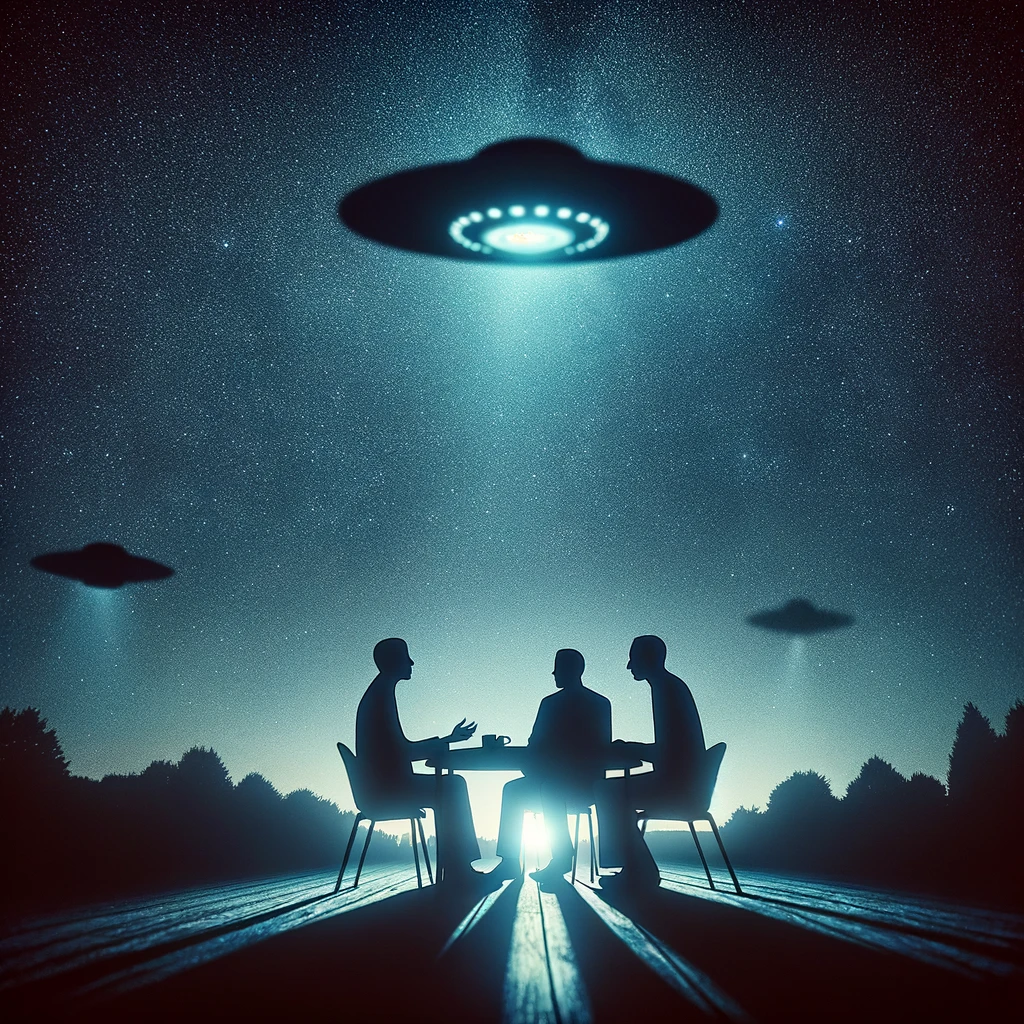Jeremy Corbell, Ross Coulthart & Bryce Zabel: A Revealing Discussion on UFOs and UAP Disclosure

In an intriguing conversation filmed in 2022 and later posted on the 7NEWS Spotlight channel on February 14, 2024, veteran investigative journalist Ross Coulthart and producer Bryce Zabel sat down with filmmaker and renowned figure in the UFO disclosure community, Jeremy Corbell. The extended interview looked into various facets of the UFO and UAP (Unidentified Aerial Phenomena) discourse, with Corbell sharing insights into his experiences, beliefs, and the significant moments in his journey of uncovering and sharing UAP-related information.
The interview kicked off with a lighthearted query about Corbell’s personal encounters with UFOs, leading into a deeper discussion on why he firmly believes in their existence. Corbell emphasized that the reality of UFOs is not a matter of personal belief but a well-documented phenomenon supported by substantial evidence, including government admissions and multiple sensor detections within restricted airspaces.
A significant part of the conversation revolved around the skepticism surrounding UFOs and UAPs, with Corbell arguing that the overwhelming evidence makes skepticism less tenable. The duo explored the notable 2019 video leaks facilitated by Corbell, which were confirmed by the Pentagon as legitimate military footage of unidentified objects, adding credibility to the claims of UAP sightings.
In the interview, Jeremy Corbell discusses the capabilities of Unidentified Aerial Phenomena (UAPs) that suggest these objects can transition seamlessly between different mediums—air, space, and sea—without the expected resistance or friction. This characteristic is highlighted when Corbell talks about the phenomena being “transmedium” vehicles, which means they have the ability to operate in multiple environments (e.g., atmospheric, space, and aquatic) without observable difficulty or alteration in performance.
The concept of “zero effort” to penetrate boundaries like air to sea or air to space suggests that these UAPs might be using advanced propulsion technologies or physics not yet understood by contemporary science. Traditional vehicles, whether they are aircraft or submarines, experience significant resistance when moving through different mediums. For example, an airplane encounters air resistance, and a submarine deals with water pressure. However, the UAPs reportedly demonstrate an ability to move from one medium to another (such as from flying at high speeds in the atmosphere to submerging in the ocean) without the deceleration or structural challenges that human-made vehicles face due to friction and pressure differences.
This absence of observable friction or resistance challenges our current understanding of physics and propulsion, hinting at potentially revolutionary technologies or natural phenomena that allow these objects to navigate the boundaries of different mediums with apparent ease.
In the interview, Jeremy Corbell discusses a specific incident involving a spherical-shaped UFO captured in the footage from the USS Omaha. The video, which Corbell describes, shows a spherical object on thermal imaging cameras, indicating that the object might not have had any visible appendages and appeared to be self-illuminated, suggesting an internal power source. This particular UFO was noteworthy because it was observed to drop into the ocean, leading to speculation about its capabilities as a transmedium vehicle, meaning it could operate both in the air and underwater.
Corbell also touches on the military perspective, where some might interpret the surveillance-like behavior of UAPs—such as their frequent presence near military assets—as potentially threatening, akin to reconnaissance. However, he counters this by referencing the 2004 USS Nimitz Tic Tac UFO encounter, suggesting that the object involved was engaged in activities unrelated to human military operations, possibly indicating that these phenomena have their own agendas or purposes beyond human understanding.
Corbell’s role as a key figure in the UAP disclosure movement was explored, with discussions on why he has become a trusted conduit for sensitive information, despite the potential risks and stigma associated with the topic. The conversation also covered the broader implications of UAP sightings, including safety concerns, the increase in sightings near war zones, and the potential for these objects to be intelligently controlled.
The interview shed light on the evolving landscape of UAP research and disclosure, highlighting the challenges and controversies that come with navigating this complex and often misunderstood field. Corbell’s insights provided a fascinating glimpse into the ongoing efforts to understand and publicly acknowledge the presence of UAPs, marking a significant moment in the broader conversation about our understanding of the unknown.

